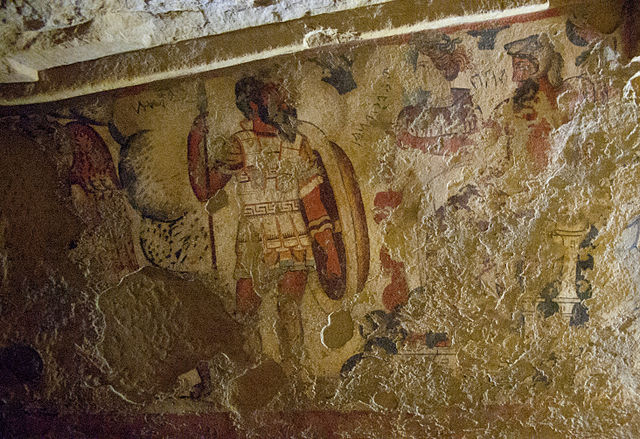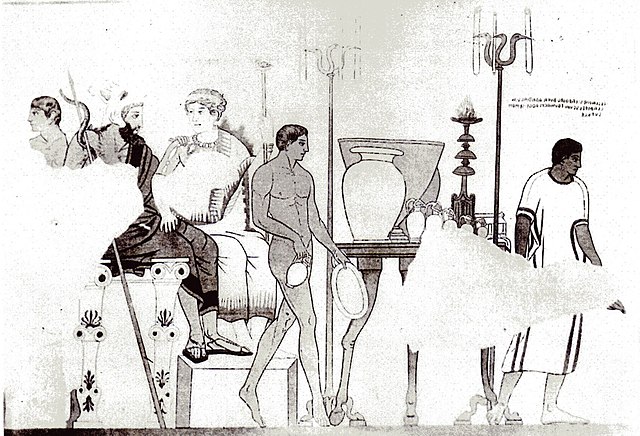Aita, also spelled Eita, is an epithet of the Etruscan chthonic fire god Śuri as god of the underworld, roughly equivalent to the Greek god Hades.
Fresco of Hades ("Aita", right) and Persephone ("Φersipnei", middle) leading a procession. Tomb of Orcus II, Tarquinia
Tomba Golini, Orvieto
Etruscan religion comprises a set of stories, beliefs, and religious practices of the Etruscan civilization, heavily influenced by the mythology of ancient Greece, and sharing similarities with concurrent Roman mythology and religion. As the Etruscan civilization was gradually assimilated into the Roman Republic from the 4th century BC, the Etruscan religion and mythology were partially incorporated into ancient Roman culture, following the Roman tendency to absorb some of the local gods and customs of conquered lands. The first attestations of an Etruscan religion can be traced back to the Villanovan culture.
Etruscan mural of Typhon, from Tarquinia
Reconstruction of an Etruscan temple, Museo di Villa Giulia, Rome, which is heavily influenced by studies of the Temple of Apollo at Portonaccio (Veio)
Etruscan votive heads IV-II century BC found in various sanctuaries of Etruria
Rare Etruscan fanu located at Orvieto.






